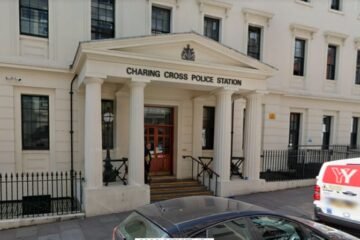Scotland has seen a major drop in vacant and derelict land, with the total area shrinking by more than a quarter since 2016. The Scottish Government’s latest survey for 2024 shows that efforts to reuse these sites, especially for new homes, are paying off amid the ongoing housing shortage.
Key Findings from the 2024 Survey
The Scottish Vacant and Derelict Land Survey for 2024 reports a total of about 10,000 hectares of such land across the country. This marks a 27 percent decrease from 2016 levels, driven by targeted government programs and local initiatives.
Out of 335 sites reclaimed last year, 192 went toward housing projects. This shift highlights a push to address Scotland’s housing crisis by turning unused urban spaces into homes. The survey also notes that urban vacant land makes up a smaller portion, while derelict sites in rural areas remain a challenge.
Experts point out that this progress helps protect green spaces by reducing the need for new builds on untouched land. Local councils have played a key role in identifying and preparing these sites for development.

Government Efforts Drive the Change
Public finance minister Ivan McKee praised the results, stating that redeveloping these areas boosts local economies and improves community life. The government’s Vacant and Derelict Land Investment Programme has been central to this success, investing £36.5 million in 2021-22 alone.
This funding has brought back 468 hectares into productive use so far. For 2025-26, the program will support 11 new projects with over £9.5 million. These efforts aim to create jobs, promote fair access to land, and tackle social inequalities.
The Scottish Land Commission has also contributed through research and tools like a map of long-term derelict sites. This map helps communities spot opportunities for reuse, from biodiversity projects to full redevelopment.
- Major funding rounds have targeted high-impact areas like Glasgow and Edinburgh.
- Community groups can now access toolkits to assess site impacts and apply for grants.
- Partnerships with developers have sped up housing builds on reclaimed land.
Impact on Housing and Communities
The focus on housing redevelopment comes at a critical time, with over 43,000 empty homes in Scotland and families struggling to find affordable options. By converting derelict sites, the government aims to add thousands of new units without sprawling into green belts.
For instance, sites suitable for up to 10,000 homes, including 2,500 affordable ones, are in the pipeline in places like East Lothian. This not only eases the housing crunch but also revitalizes neighborhoods hit hard by long-term abandonment.
Communities benefit from better quality of life, with reused land supporting local businesses and green spaces. However, challenges remain, such as contamination on old industrial sites, which requires careful cleanup.
A recent report from the Scottish Land Commission shows steady progress but calls for more action on persistent problem areas. It reviewed four years of taskforce recommendations and found that while urban sites are improving, rural derelict land needs stronger incentives.
Broader Trends and Future Outlook
Scotland’s approach aligns with wider UK efforts to tackle empty properties and boost housing supply. Similar schemes in England have seen derelict railway land eyed for 40,000 new homes, showing a growing trend toward sustainable reuse.
Data from the survey reveals patterns in land types:
| Land Type | 2024 Area (Hectares) | Change Since 2016 |
|---|---|---|
| Urban Vacant | 2,500 | -30% |
| Derelict | 7,500 | -25% |
| Total | 10,000 | -27% |
This table illustrates the overall decline, with urban areas seeing the sharpest drop due to easier access and higher demand.
Looking ahead, experts predict further reductions if funding continues. The government plans to update the site register and map later this year, making it easier for developers and communities to get involved.
Challenges and Calls for More Action
Despite the gains, not all sites are moving forward quickly. Some of Scotland’s largest derelict areas, over 100 hectares each, remain unused even when suitable for regeneration. Reasons include ownership disputes and high cleanup costs.
Advocates like Shelter Scotland urge faster action on empty homes, noting a 10 percent rise in properties brought back into use last year. Yet, with 37,000 long-term empty buildings, more tools like compulsory sale orders could help.
Environmental groups stress the need to balance development with nature recovery. Some sites have naturally become biodiversity hotspots, suggesting not all should be built on right away.
Overall, the survey paints a hopeful picture, but sustained effort is key to fully erasing Scotland’s legacy of vacant land.
What do you think about these developments? Share your thoughts in the comments below or spread the word by sharing this article with others interested in Scotland’s housing future.


















